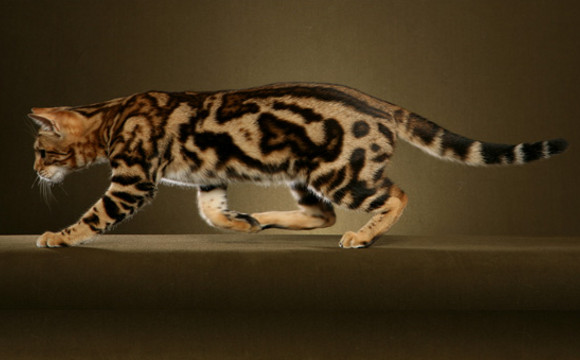The Bengal cat, known for its striking appearance and lively personality, has a fascinating history and unique characteristics that set it apart from other breeds. This guide delves into the origins, physical attributes, temperament, and care requirements of the Bengal cat, providing a thorough understanding for prospective owners and enthusiasts.
History of the Bengal Cat
The Bengal cat breed originated from a hybrid of the Asian leopard cat (Felis bengalensis) and the domestic cat. This unique crossbreeding began in 1963 when Jean Mill of Covina, California, bought a female leopard cat and later bred it with a domestic male cat. The result was a hybrid with the exotic appearance of the leopard cat and the affectionate nature of a domestic cat.
Mill’s initial aim was not to create a new breed but to have a unique pet. However, recognizing the plight of orphaned leopard cat cubs, she saw the potential in developing a breed that could serve as a substitute, reducing the demand for wild leopard cats. This breeding process faced challenges, particularly with the sterility of male hybrids, but successive generations became more stable in temperament and fertility.
Physical Characteristics
Bengal cats are known for their leopard-like appearance, featuring large, striking eyes, pronounced whisker pads, and a robust build. They have longer legs compared to domestic cats and boast a coat adorned with rosette patterns and horizontal spots. The coat is not only visually appealing but also tactile, often described as feeling like satin or silk. A unique feature is the “glitter gene,” which gives their fur an iridescent quality, making it shimmer in the light.
Bengals come in various coat colors and patterns, including the popular snow leopard, marbled, and snow marbled variations. The emphasis in show-quality Bengals is on the contrast between the spots and the background color, with clear, distinct patterns being highly desirable.
Temperament and Personality
Bengal cats are confident, alert, curious, and friendly. They are known for their playful and energetic nature, often displaying a high level of intelligence and curiosity. Unlike many other breeds, Bengals are not intimidated by water and may even enjoy swimming. They are very interactive with their owners and thrive on social engagement, making them great companions for active households.
While they are generally affectionate, Bengals retain a degree of independence. It’s crucial to provide them with ample mental and physical stimulation to prevent boredom. Their playful nature makes them great with children and other pets, although early socialization is recommended.
Care and Maintenance
Caring for a Bengal cat involves regular grooming to maintain their beautiful coat, although they are generally low-maintenance in this regard. They require a balanced diet to support their active lifestyle and regular veterinary check-ups to ensure their health and well-being.
Bengals are relatively hardy, but like all breeds, they can be prone to certain health issues. Common concerns include hypertrophic cardiomyopathy, a form of heart disease, and progressive retinal atrophy, which affects vision. Responsible breeding practices and regular health screenings can help mitigate these risks.
Considerations for Potential Owners
Before bringing a Bengal cat into your home, it’s important to consider their need for space and activity. They are highly energetic and require an environment that can cater to their physical and mental stimulation needs. Interactive toys, climbing trees, and engaging playtime are essential to keep a Bengal happy and healthy.
Prospective owners should also be aware of the legal and ethical considerations surrounding the breed. In some regions, Bengals are subject to restrictions or bans due to their wild ancestry. Ensuring that you are purchasing from a reputable breeder who adheres to ethical breeding practices is crucial.
Conclusion
The Bengal cat is a remarkable breed that combines the beauty of the wild with the affection of a domestic companion. Their striking appearance, playful nature, and engaging personality make them a unique and rewarding pet for those who can meet their needs. Whether you’re a seasoned cat owner or new to the feline world, the Bengal cat offers an enriching and dynamic addition to any household.

